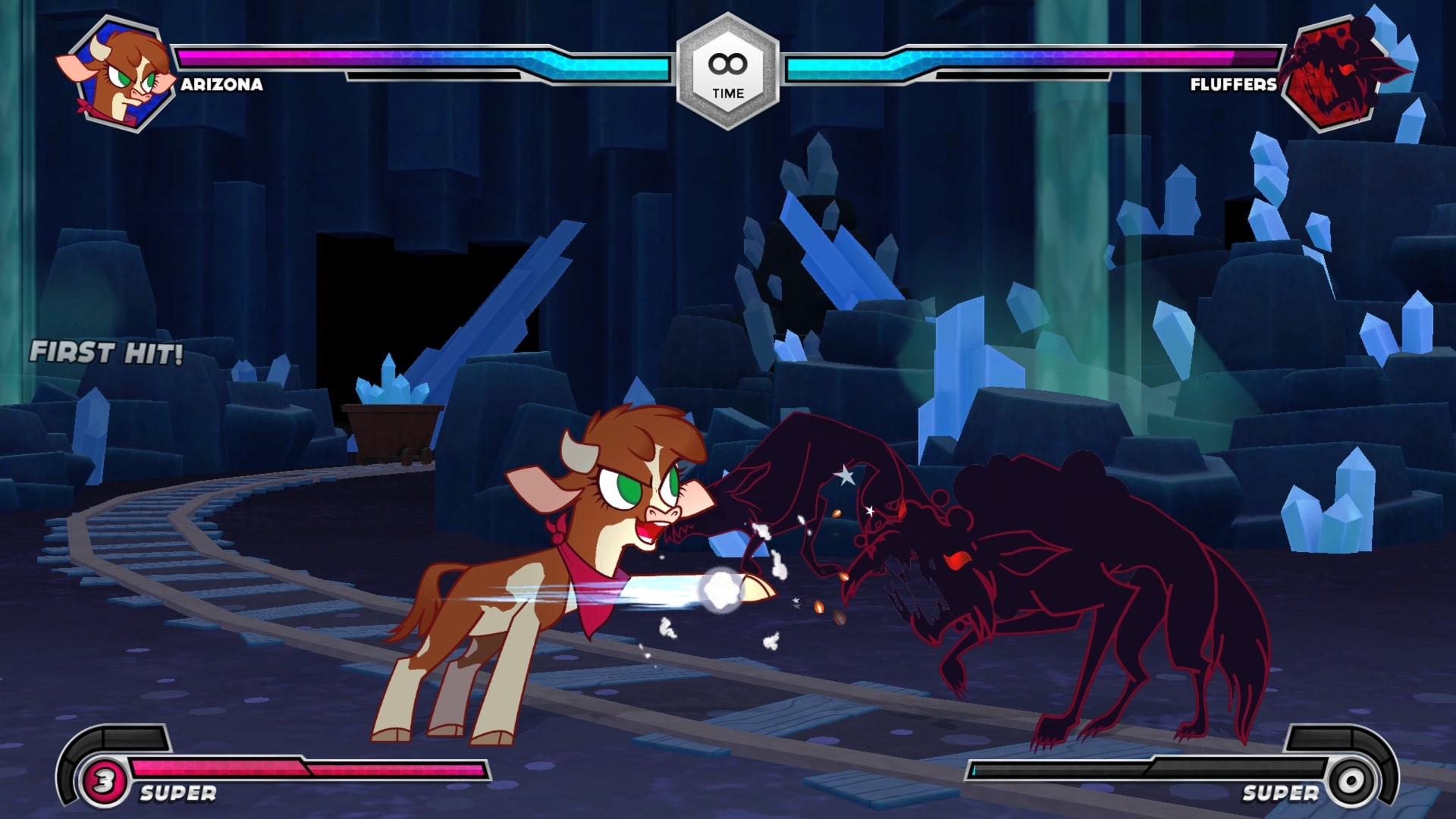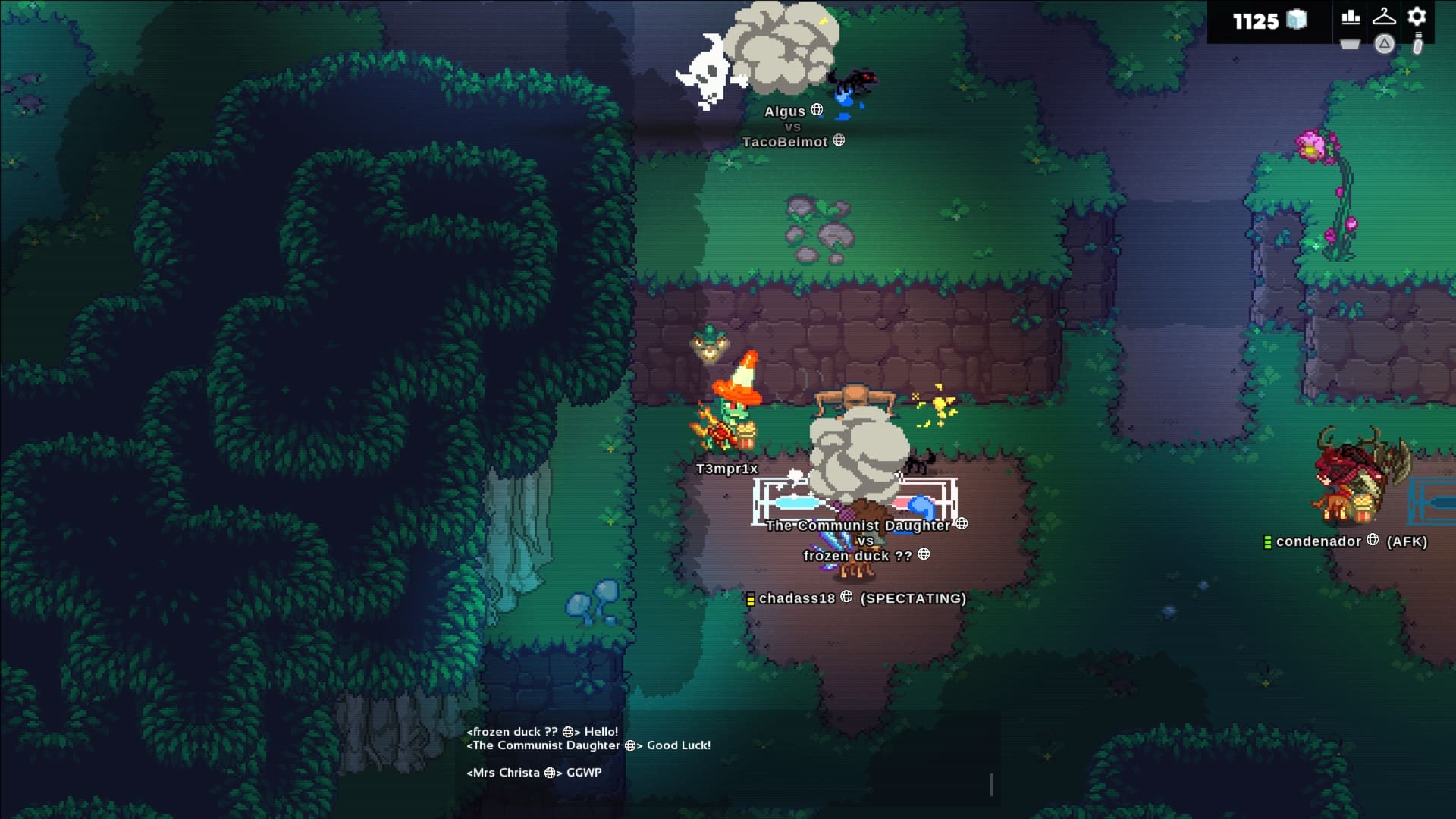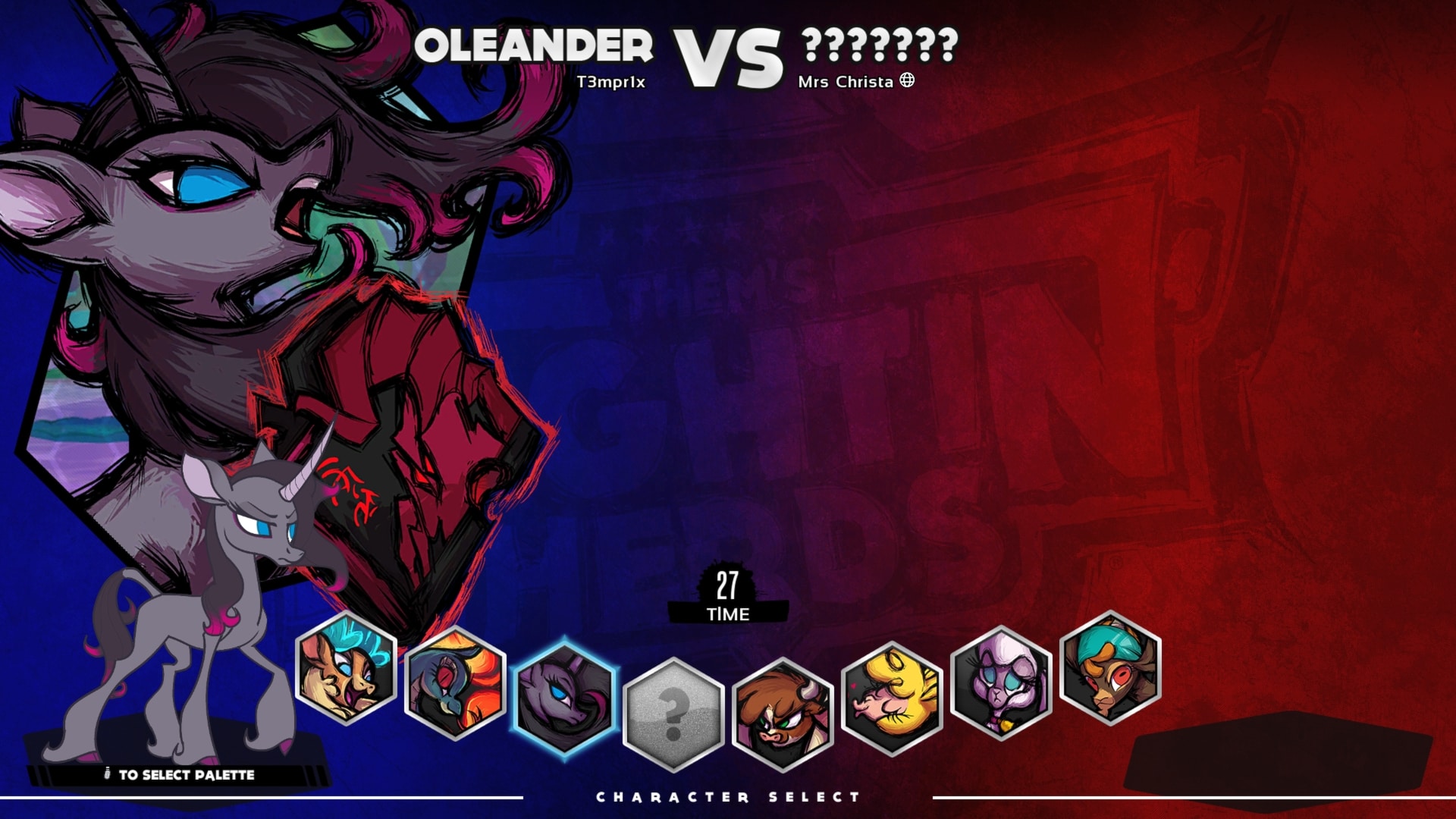Could your next fighting game feature nothing but four-legged ungulates? Developer Mane6 thinks so. While it may no longer have the blessing of Hasbro, this My Little Pony-inspired fighter has more legit fighting prowess than might be surmised at first glance. But is there enough here to warrant a purchase? Find out in our Them’s Fightin’ Herds review.
Fighting Is Magic
Let’s start at the beginning: Them’s Fightin’ Herds actually has a history dating back to at least a decade ago. Someone going by the alias of “Anukan” posted concept art of a game called Marevel vs. Clopcom; an obvious nod to the Marvel vs. Capcom franchise. It showed what a fighting game within the My Little Pony universe might look like. Fast-forward a few years, and a development team was formed, dubbed Mane6. Without taking any money of their own since they were using Hasbro’s intellectual property, they soon had a working game. MLP: Fighting is Magic was a mostly-working game created in the Fighter Maker 2D engine, one that was invited to be showcased at the 2012 EVO Championship Series. Shortly after, Hasbro sent a cease-and-desist letter, and production halted.
With newfound experience in making games, Mane6 charged ahead, and the result of their hard work has been realized with the release of Them’s Fightin’ Herds. The premise is similar to Fighting is Magic, as all of the game’s playable characters are four-legged ungulates (large mammals with hooves, think horse, cow, llama, etc) with differing cute styles. While not quite as over-the-top kawaii as My Little Pony, there is still no blood or anything too “ugly” here with the exception of the game’s main enemies, simply called Predators.
Don’t be fooled by the game’s outwardly cute appearance. This is a technical fighter, one that has been featured in the EVO fighting game tournament in the past, and no doubt will appear there again in the future. There are simple combos consisting of just a couple of sequential button presses, as well as 25-move combo abominations that take forever to execute but deal massive damage, which the game delightfully calls quarter pounds. Combos must be performed within just a few frames, and most moves can be blocked by holding the analog stick away from the attack and at the correct height. There’s grabs, counters, jump cancels, all the things you’d expect from a modern fighter, really, all wrapped up in a colorful, 2D art style that is as distinctive as it is playful. A 3/4ths perspective was chosen to compensate for the characters’ wide stances, since they are all four-legged. If you hope to become a competitive player, expect to dedicate dozens of hours of your life to do so.
The story that has been released thus far was crafted with the help of My Little Pony creator Lauren Faust, and it features the nations of Foenum sending forth champions to fight to help secure a mystical key that will help destroy evil Predators, ghost-like creatures that take on the form of coyotes, panthers, snakes, and other real-life hunters. The player takes on the role of Arizona, a young calf who was declared the Champion of the Prairie. Only Chapter 1 of the story has been released thus far, ending with a fight against Oleander and on a cliffhanger.
Pixelated Pixel Lobby
The campaign will be completed by most people within a couple of hours, though it should be noted that the difficulty cannot be changed once chosen, and outside of the tutorial there are sharp increases in difficulty that feel a bit unbalanced. It’s not clear why the difficulty cannot be changed, and no doubt this will be a source of frustration for some people who reach the final battle only to be stuck against an opponent who is much tougher than those who came before her. I am reminded of Mortal Kombat 11 where the final fight against Kronika was incredibly difficult, but there I was able to dial down the difficulty to get through it. Such a feature is immensely helpful for those of us who like a challenge but only to a certain point.
Outside of the campaign, there are a couple of game modes to choose from. Local play is always an option, including an arcade mode and training which allows you to see the combos available for your chosen character, as well as which you have completed. Online play is also available, with traditional lobbies and casual matches but also something called a Pixel lobby. These are areas done in the same pixel art style as the campaign, where players can meet to socialize and participate in matches while exploring. A salt mine can also be found in these areas, which become a mini quest of sorts where players mine for salt, the game’s currency. There are also predators within these mines, which can be fought for more salt. Once a timer counts down, a wave-ending scenario takes place. Players simply stay until either the timer runs out or they run out of health, keeping any salt they earned along the way. This salt can be cashed in for cosmetics at a vendor in the lobby, and can only be earned as there are no microtransactions to be found.
Shallow Roster
Part of the appeal of most fighting games is in their wide variety of characters. Them’s Fightin’ Herds unfortunately has only launched with six. While they do each bring something different, seeing such a short roster is a bit disappointing. Considering Super Smash Bros. had a much larger development team and only launched with twelve characters, perhaps this isn’t really that small of a roster, and with time perhaps Mane6 will expand the character selection to something larger. There are also eight stages to choose from, which can at least help the game’s variety a bit.
Online play experience will of course depend on your internet connection, but Them’s Fightin’ Herds does utilize GGPO (Good Game Peace Out), which is a version of rollback netcode. This uses predictive algorithms which attempt to keep things even by having the game wait a certain number of frames before applying each player’s inputs to determine what is happening in-game. In theory, this results in a nearly lag-free experience for both players, and in practice it does seem to help. Before each match, the game takes the ping times of both players and recommends a skip value to apply to the match. I saw ping times that were in the hundreds of milliseconds, and yet the game still felt smooth when playing online.
A custom engine from Lab Zero Games called the Z-Engine keeps things running pretty well, though some slowdown does occur as matches end. Otherwise, it runs fine and stays out of the way to let players fight. There are no graphics options in terms of say a 4K or a performance mode, and levels naturally load in just a few seconds owing to the PS5’s SSD. There is no haptic feedback or even simple vibrations, though such features would likely reduce the competitive nature of this game anyway.
Verdict
Them’s Fightin’ Herds has the technical chops to roll with the competitive fighting scene. Looks can be deceiving, and this game will probably be skipped by too many people simply because it doesn’t look the part. The small character roster won’t help things, either. Still, with a solid fighting core, Mane6 has a good thing going here, and hopefully the release of Them’s Fightin’ Herds fuels a continuous stream of updates.
Score: 7.5/10
Pros:
- A technically-competent fighter
- Rollback netcode ensures a smoother online time
- No microtransactions
Cons:
- Not enough characters to choose from
- Solo campaign difficulty cannot be changed
- May have too limited of an audience
Them’s Fightin’ Herds review code provided by publisher. You can read MP1st’s review and scoring policy right here.



